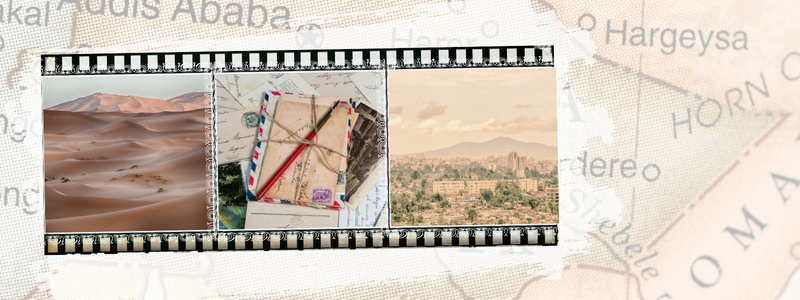News Story: The First Journey to Ethiopia- Chris Schenk
My journey to Ethiopia followed the rules of ‘Race across the World’: I had no credit card, there were no smartphones, and I got to Ethiopia (though not to Addis Ababa) without flying.
Project sent me there to teach in the Abba Hanna Jimma School, run under the auspices of Prince Iskinder Desta, Haile Sellassie’s oldest grandson, who I think had been at school with Captain Bristol, as he was when I was recruited. I was given passage on the Lion of Judah, an Ethiopian cargo ship, and boarded it in the East India Docks in London in July 1967. I was one of only two passengers and we had our meals with the Dutch officers. The first part of the voyage was full of interest, with stops in Rotterdam, Antwerp and Genoa, but then, instead of going through the Suez Canal, which was still closed after the Six-Day War, we embarked on a four-week journey around the Cape of Good Hope, with only one stop of three hours to refuel in Dakar, Senegal. For the most part, it was extremely boring. We only saw land as we passed South Africa, and were visited by a variety of sea-birds including a wandering albatross. In desperation, I asked the Captain for a job and he gave me the task of typing out the ship’s manifest on a jumbo typewriter. I had my eighteenth birthday on the 25th August, which I celebrated by presenting the officers with a bottle of port to drink after dinner. I remember that it cost me seven shillings and six pence – properly duty free!

Soon afterwards, we arrived in Assab, now in Eritrea, but then in Ethiopia. Eritrea had been annexed by Ethiopia in 1962, giving Ethiopia a coast-line and allowing it to develop a navy. Prince Iskinder Desta had been appointed the head of the navy, and his rank went up as the navy acquired new ships. When I knew him, he was a Commodore. Staff at the Navy base in Assab had been primed to look after me, and I was taken, on the evening I arrived, to a beach party to celebrate Ethiopian New Year. The Ethiopian calendar is some seven years behind the Gregorian, so it was the beginning of 1960.
A few days later, I was put on a plane to Addis Ababa. I had never flown before and it was a magical experience, in a small plane flying low over the Danakil Desert and then up into the mountains, to arrive in Addis, some eight thousand feet above sea-level, and still in the rainy season, so it was cold and wet. Later, in the dry season, I reflected that in 24 hours in Addis, you experienced the same range of temperatures as in a whole year at home. By night it was chilly enough to need a coat, but in the afternoon it was a little warmer than a British summer’s day.
My fellow Project Volunteer, Michael Coke, arrived by plane, shortly before term started and we were found a house within five minutes walk of the school, which we shared with Tim Beatty, whose father, Captain Beatty, was employed by the Ethiopian Navy to train their personnel in a camp in the hills above Massawa, far to the North of Addis.

My only means of communicating with home was by letter, and when I arrived there were several waiting for me in the post restante at the main Post Office in Addis. It took about ten days for letters to arrive, so nearly three weeks for an exchange of correspondence. Only once, during my time in Ethiopia, did I speak to my family on the phone. It was a laborious and costly experience. I booked a three minute call shortly before Christmas, and was put through at the main Post Office, with the pips going very soon after I began to speak!
Go Back